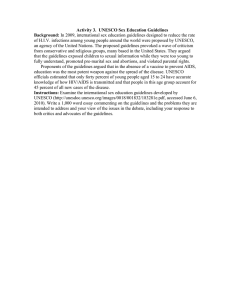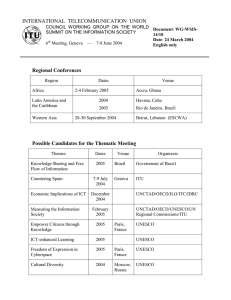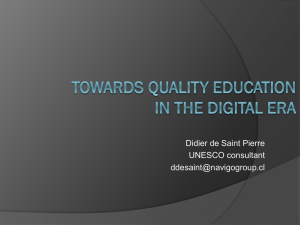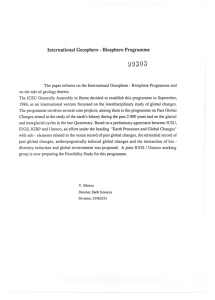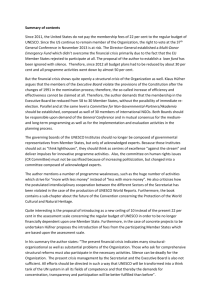http://en.unesco.org/ EDUCATION
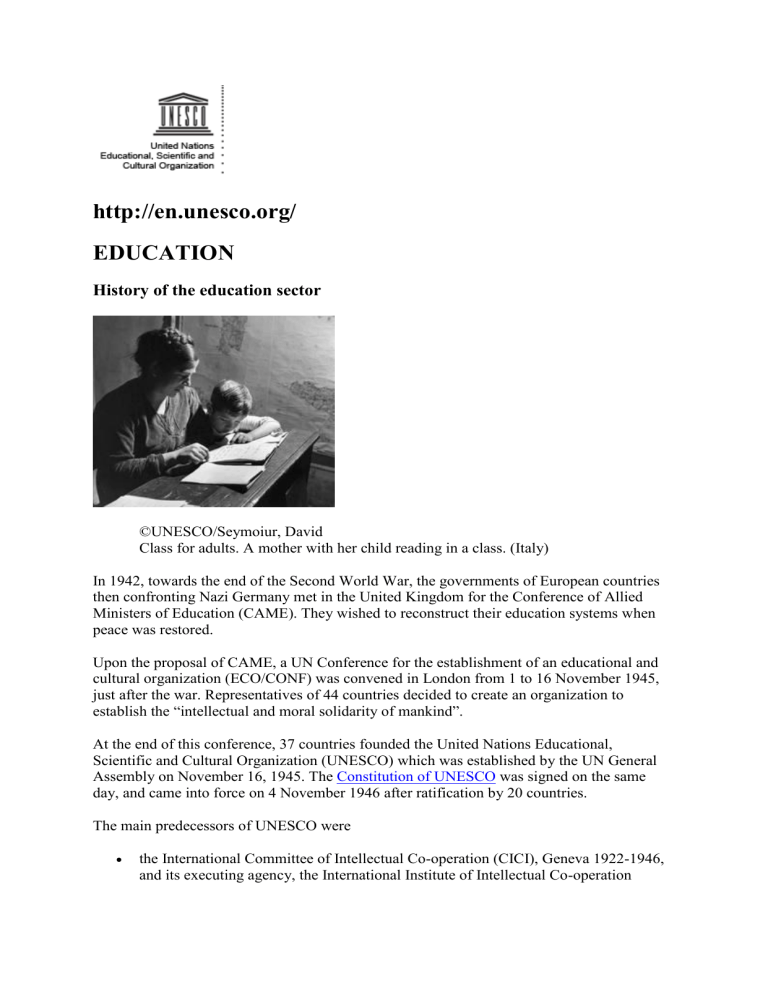
http://en.unesco.org/
EDUCATION
History of the education sector
©UNESCO/Seymoiur, David
Class for adults. A mother with her child reading in a class. (Italy)
In 1942, towards the end of the Second World War, the governments of European countries then confronting Nazi Germany met in the United Kingdom for the Conference of Allied
Ministers of Education (CAME). They wished to reconstruct their education systems when peace was restored.
Upon the proposal of CAME, a UN Conference for the establishment of an educational and cultural organization (ECO/CONF) was convened in London from 1 to 16 November 1945, just after the war. Representatives of 44 countries decided to create an organization to establish the “intellectual and moral solidarity of mankind”.
At the end of this conference, 37 countries founded the United Nations Educational,
Scientific and Cultural Organization (UNESCO) which was established by the UN General
Assembly on November 16, 1945. The Constitution of UNESCO was signed on the same day, and came into force on 4 November 1946 after ratification by 20 countries.
The main predecessors of UNESCO were
the International Committee of Intellectual Co-operation (CICI), Geneva 1922-1946, and its executing agency, the International Institute of Intellectual Co-operation
(IICI), Paris, 1925-1946. the International Bureau of Education (IBE), Geneva, 1925-1968. Since 1969 IBE has been part of the UNESCO Secretariat under its own statutes.
Mission
The mission of the UNESCO Education Sector is to:
provide international leadership to create learning societies with educational opportunities for all populations.
provide expertise and foster partnerships to strengthen national educational leadership
and the capacity of countries to offer quality education for all. work as an intellectual leader, an honest broker and clearing house for ideas, propelling both countries and the international community to accelerate progress towards these goals.
facilitate the development of partnerships and monitors progress, in particular by publishing an annual Global Monitoring Report that tracks the achievements of countries and the international community towards the six Education for All goals .
Our framework
The priorities of UNESCO’s Education Sector are determined by goals adopted by the UN and UNESCO and include:
The six Education for All goals adopted in the Dakar Framework for Action 2000-
2015
The UN Millennium Development Goals , especially Goal 2 and Goal 3
The UN Literacy Decade 2003-2012
The UN Decade of Education for Sustainable Development 2005-2014
The EDUCAIDS Global Initiative on Education and HIV/AIDS
Division for Inclusion, Peace and Sustainable Development (ED/IPS)
Ms Soo Hyang CHOI
Director sh.choi(at)unesco.org
Section of Education for Inclusion and Gender Equality (ED/IPS/IGE)
Ms Maki KATSUNO-HAYASHIKAWA
Chief of Section m.hayashikawa(at)unesco.org
Section of Education for Sustainable Development and Global Citizenship
(ED/IPS/ESG)
Mr Alexander LEICHT
Chief of Section a.leicht(at)unesco.org
Section of Health and Education
Mr Christopher CASTLE
Chief of Section c.castle(at)unesco.org
Unit for ASPnet (ED/IPS/ASP)
Ms Sabine DETZEL
Chief of Unit s.detzel(at)unesco.org
Strategy
UNESCO’s Education Sector has the following strategic objectives to fulfil its mission:
Capacity-building: to provide a platform for intellectual and thoughtful leadership for educational innovation and reform.
Laboratory of ideas: to anticipate and respond to emerging trends and needs in education and develop education policy recommendations based on research evidence.
International catalyst: to initiate and promote dialogue and exchange of information among educational leaders and stakeholders.
Clearing house: to promote the development and implementation of successful
educational practices and document and disseminate successful practices.
Standard-setting: to develop Standards, Norms and Guidelines for action in key education areas.

